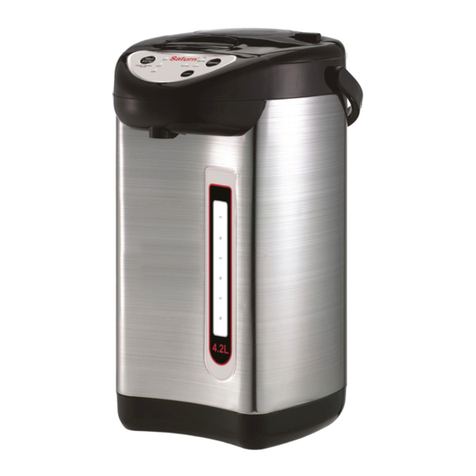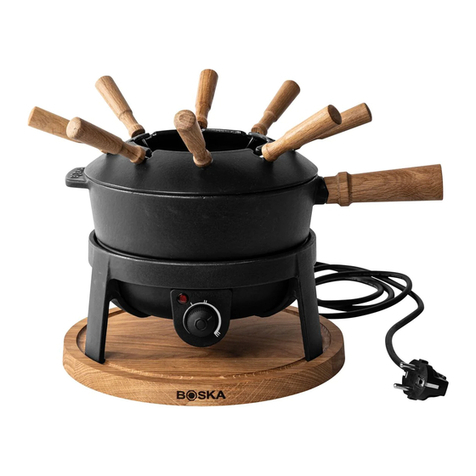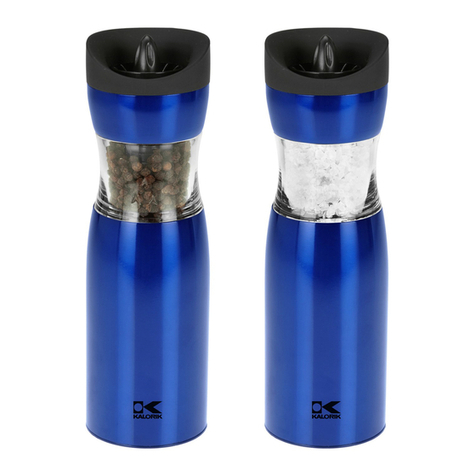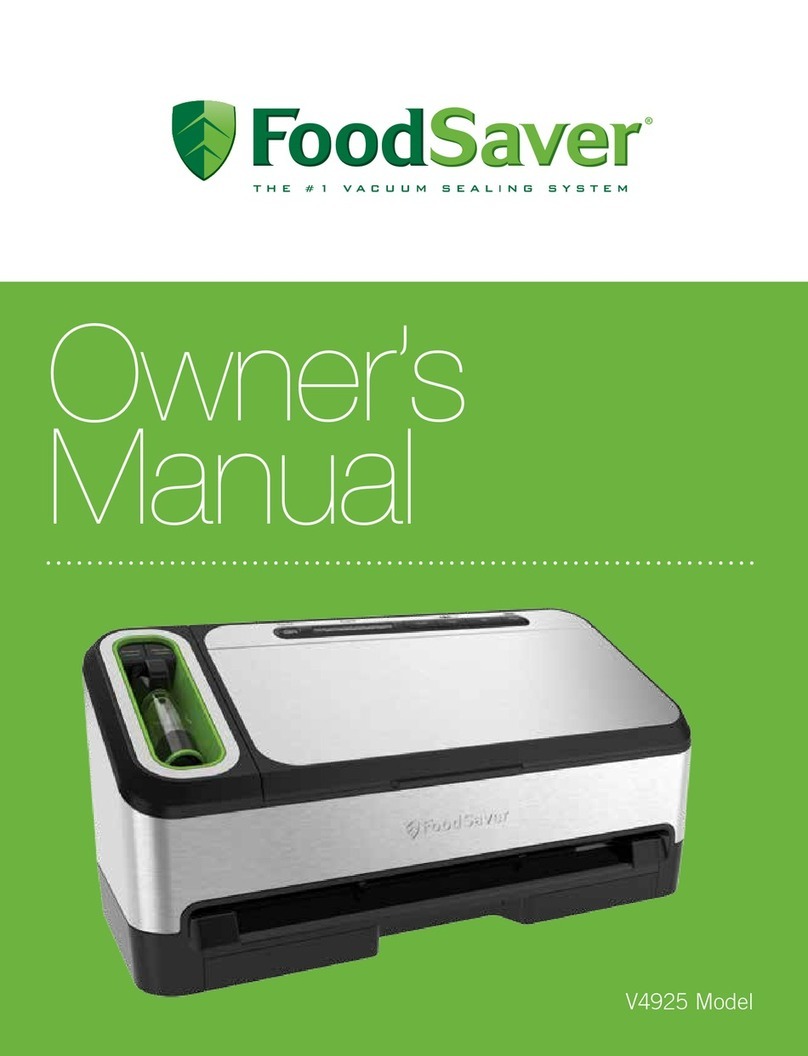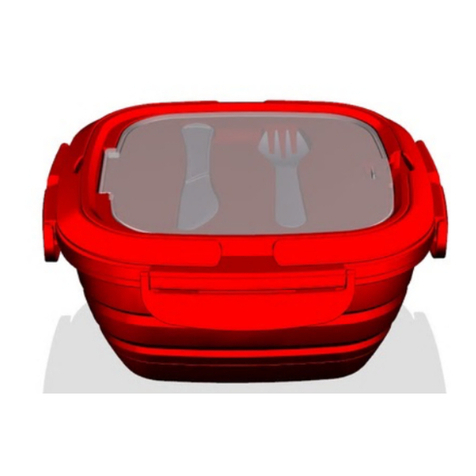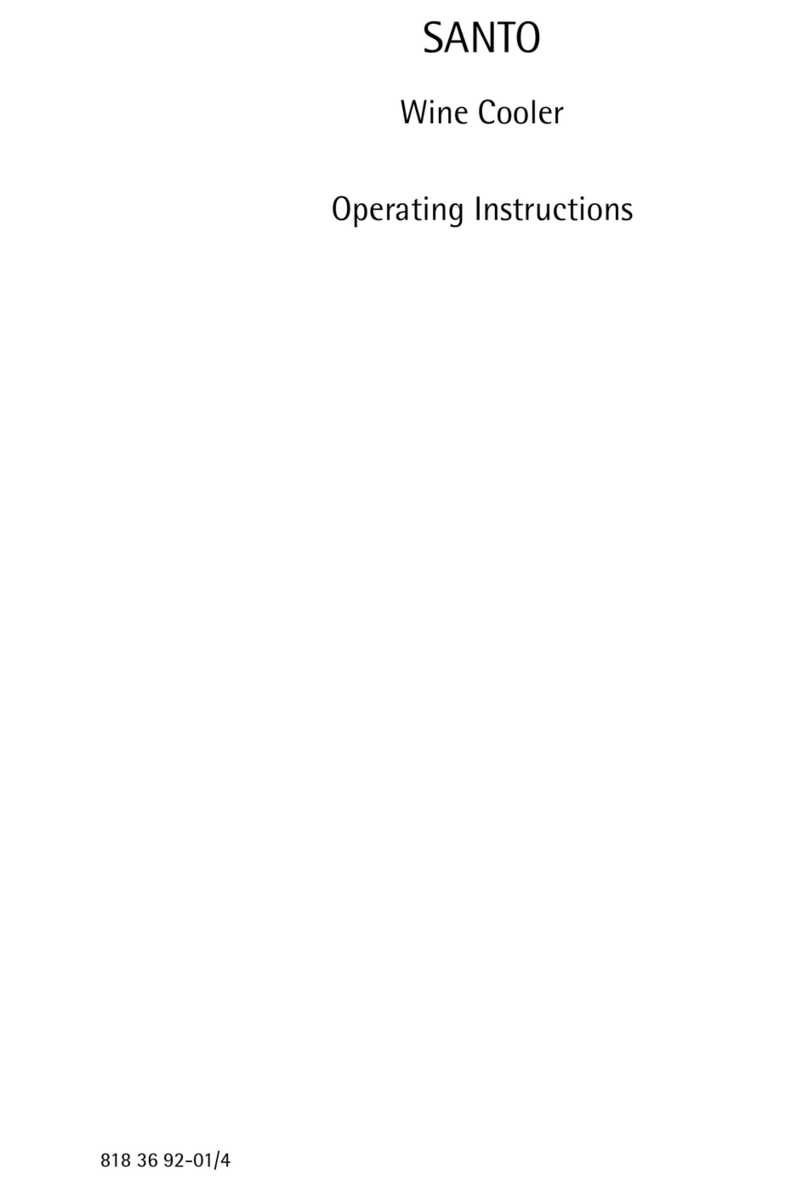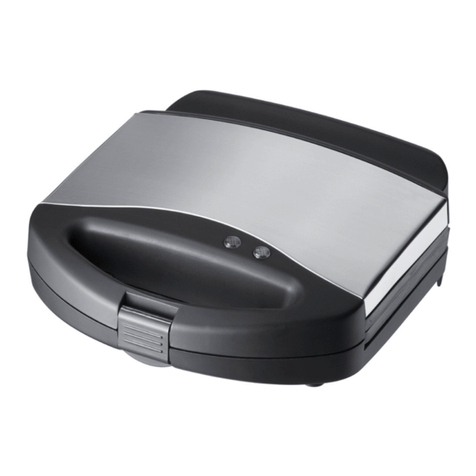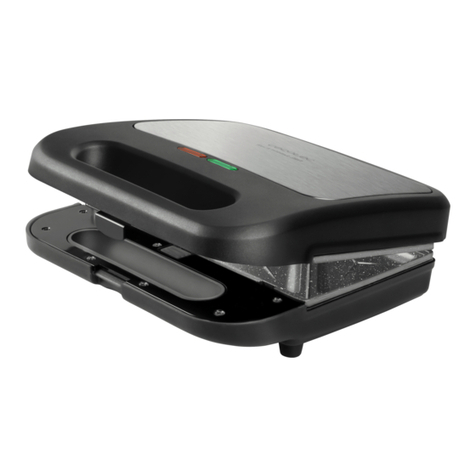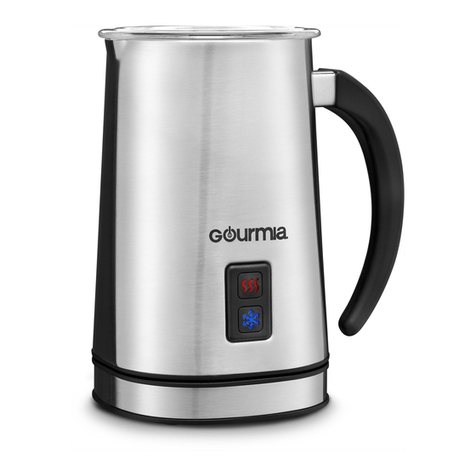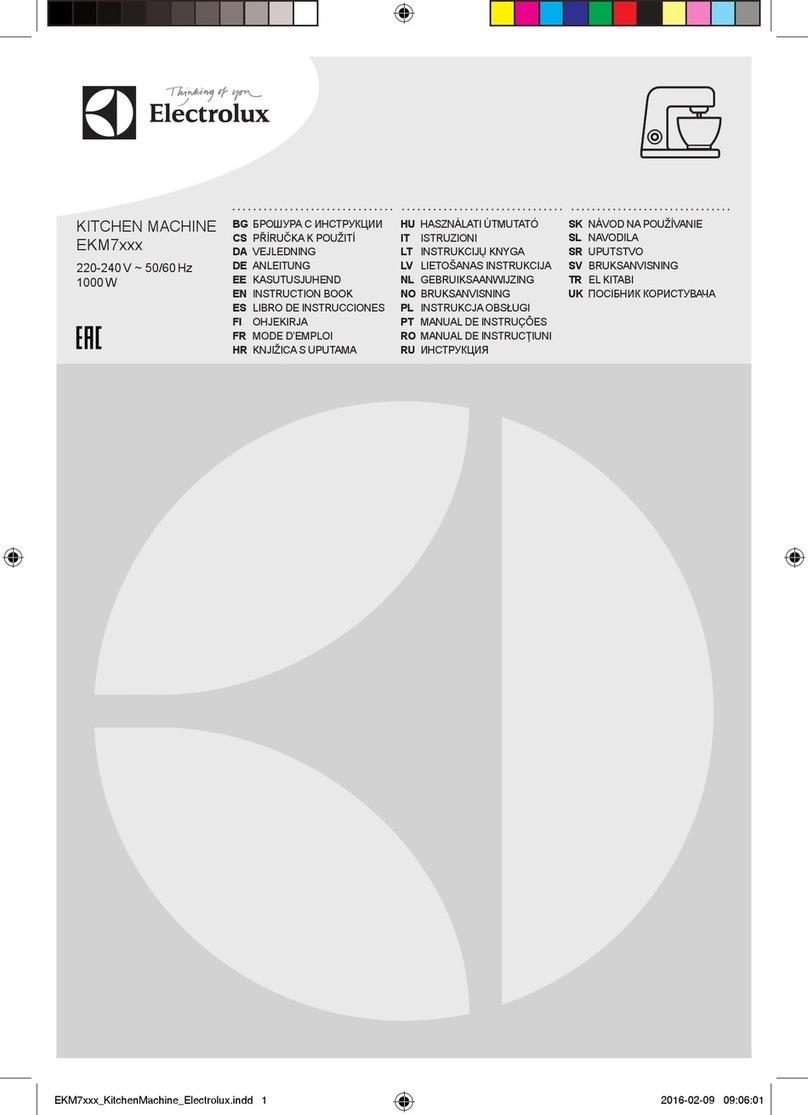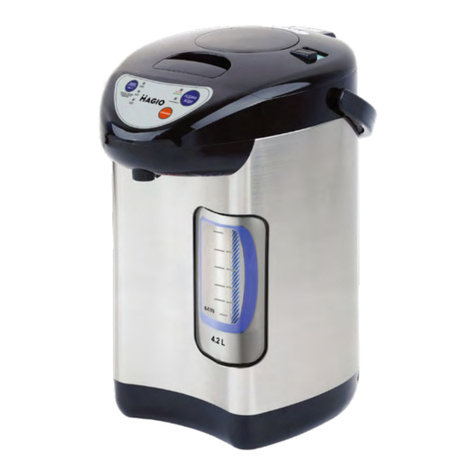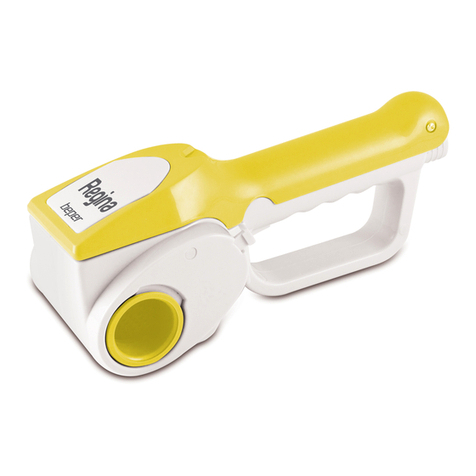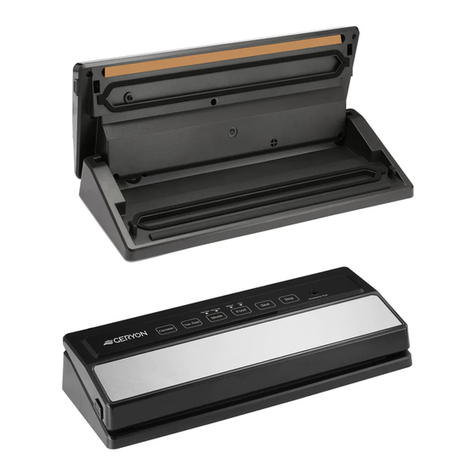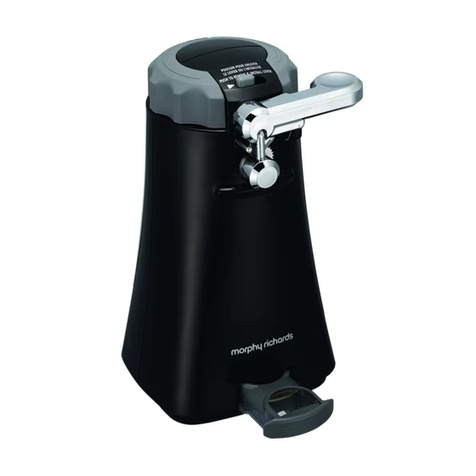Sausace Maker D-5 User manual

R
Stainless Steel Food Dehydrator
Operating Manual
D-5 #32700
#32701
#32702
1500 Clinton St. Bldg. 123, Buffalo, NY 14206
Tel: (716) 824-5814 • Fax: (716) 824-6465
www.sausagemaker.com
D-10 #32704
#32705
#32706

D-5 and D-10 Dehydrator Operating Manual
Table of Contents Page
Introduction 1
Dehydration 2
Important Safeguards 2
Preparation of Food (Pre-Treatment) 2
Operating Instructions 3
Food Drying Guides 4
Food Storage 7
Reconstitution 7
Cleaning 7
Reviewing the Dehydrating Process 8
Warranty 8
D-5 Parts List 9
D-10 Parts List 10
Introduction
Drying food for presearvation dates back to the ancient Egyptians. The
Spaniards were the rst explorers known to use dehydration to prepare food for their ex-
peditions. The method was used extensively in the days of the Lewis and Clark expedition
as they charted the expanse of the Louisiana Land Purchase. Buffalo, elk and deer were
plentiful, but their success relied heavily upon the proper use of this preserving method.
The D-5 and D-10 Dehydrators were designed and constructed to help you get the best
results possible. The shell is made of durable stainless steel so it can be easily cleaned and
maintained. When used properly, it will not rust or crack. All electrical components used are
UL listed for safety and reliability. The information in this manual is intended to help you get
the best results from this equipment. Please read this booklet carefully and call the manu-
facturer if you have any questions.
1

Dehydration
There are no exact rules that apply to food dehydration because your results can be af-
fected by room temperature, relative humidity and moisture levels in the food that you are
drying. To become procient, it will be necessary to experiment with your drying techniques.
If you use too much heat, food may harden on the outside while still being moist inside.
However, with too little heat, your drying times will be very long. With a little practice you will
be creating tasty, ready to eat snacks in no time.
Important Safeguards
1. Read ALL of these instructions thoroughly before using your dehydrator.
2. Save these instructions for future reference.
3. Never leave your dehydrator unattended.
4. Close supervision is required if the unit will be used around children.
5. Only for use indoors in a clean, dry location, free of ammable objects.
6. This unit gets hot. Do not touch surfaces while operating.
7. Continuous operation above 155° F is not recommended as surfaces will
become very hot.
8. This unit may scratch household surfaces.
9. Do not use if the cord or controls have been damaged in any way. Contact
the manufacturer before attempting to make any repairs.
10. Do not use sharp utensils inside the unit.
11. Turn off unit before plugging into or unplugging from an electrical outlet.
12. Unplug the unit when not in use.
13. Allow unit to cool before cleaning.
14. Clean with a damp cloth and mild detergent.
15. Never immerse unit or cord in water or other liquids.
16. Never plug unit into a damaged electrical outlet.
17. Do not allow the cord to contact the edge of a counter, table or hot surface.
18. The use of attachments or accessories is not recommended by the
manufacturer and will void the warranty.
19. Do not attempt to move this unit while it is operating.
Preparation of Foods (Pre-Treatment)
For best results, select the freshest foods available to dehydrate. Note that
immature fruits and vegetables do not have as much color and avor as do those that are
fully matured. Foods should be dehydrated as soon after purchase as possible. Foods high
in sugar such as apples, pears, peaches and bananas are prone to darkening as a result of
oxidation of the sugars. Below are some
pre-treatments that will help reduce this effect.
Lemon and pineapple juice are natural antioxidants. Place the sliced produce in the juice
for a few minutes. Remove, drain and place on the dehydrator shelf. For extra avor, try
sprinkling on cinnamon, Jello powders or other sweeteners.
2

Preparation of Foods (Pre-Treatment), cont’d
Ascorbic acid mix, a form of vitamin C which is available at most health food stores,
comes in either tablet or powder form. Use about 2-3 tablespoons of powder or ground
tablets per quart of water. Stir to completely dissolve powder. Place fruit into the solution for
2-3 minutes. Remove, drain and place on the dehydrator shelf.
Sodium Bisulte can be purchased at your local pharmacy. If you or anyone who will be
eating the food has any known chemical allergies, you should check with your
physician before using this chemical. Be certain to ask for food grade (safe) product only.
Mix 1 teaspoon of sodium bisulte in 1 quart of water. Dip the sliced fruit in the solution for
a few minutes. Remove, drain and place on the dehydrator shelf.
Blanching is used primarily to prepare fruits and vegetables for dehydrating that have
skins that will toughen during drying. This process helps lock in the color and avor as well
as soften the skin of grapes, cherries, prunes and plums. There are two blanching methods:
water and steam.
Water blanching - Fill a large pan about half full of water. Bring water to a boil.
Use tongs to place food directly into the water, cover the pan and blanch for
about 3 minutes. Remove, drain and place on the dehydrator shelf.
Steam blanching - Using a steamer pot such as one used in Chinese cooking,
put 2-3 inches of water in the pan and bring to a boil. Place food into the steamer
basket, place in pan and cover. Steam food for about 5 minutes. Remove and
place on the dehydrator shelf.
Operating Instructions
For the safest results, read all of the instructions rst.
1. Examine the carton and the unit for any damage that may have occurred during
shipping. Contact the manufacturer and the carrier to report any damage.
2. Fill out and return the product warranty card. The card must be on le for your
warranty to take effect.
3. Make sure the power switch is turned off. Place the unit on a clean, dry surface away
from children and pets. Plug into an undamaged electrical outlet. Warning: Do not use
an extension cord with your dehydrator.
4. Turn on the unit. The unit will begin to heat up. You may hear the heating element
cycle on and off depending on the temperature you have selected.
5. Lift the door up 2-3” and heat the unit at 90° F for 45 minutes to remove any moisture.
6. If the unit stops for any reason, turn off, unplug and then repeat Steps 3 and 4. If the
unit does not operate normally, turn off, unplug and call the manufacturer.
7. Follow your recipe to prepare the food that you wish to dehydrate. Place the prepared
food evenly on the shelves provided. We recommend using cooking spray on the
shelves to prevent sticking. Do not overlap the food.
8. Using oven mitts, remove the front panel by sliding it straight up. Set it aside on a heat
resistant surface.
3

Operating Instructions, cont’d
9. Carefully place shelves onto the rails inside the unit and slowly slide them in. Forcing
the shelves in may damage the heating assembly.
10. Slide the cover into place.
11. To monitor the internal temperature of the unit, slide the optional thermometer into the
hole on the front panel. THIS THERMOMETER MUST BE REMOVED BEFORE
YOU CAN OPEN THE FRONT PANEL. FAILURE TO REMOVE IT WILL DAMAGE
THE SHELVES AND THE THERMOMETER.
12. Set the temperature by turning the knob on top of the unit. Monitor the internal
temperature and adjust as needed.
13. Monitor the unit to ensure that the proper temperature is maintained. If the internal
temperature exceeds 155° F, it may damage the unit. If the temperature of the unit
reaches 155° F, turn off and allow it to cool.
14. If drying is uneven, use oven mitts to rotate the shelves 180°.
15. For very moist foods, such as tomatoes, it may be necessary to prop open the front
cover 1 1/2 to 2” with a small block of wood for the rst 2 hours of operation. This will
increase the air ow and help drive excess moisture out of the unit.
16. Note: Moisture may collect on the bottom of the unit during operation and can be
wiped out with a paper towel. Avoid touching the walls and shelves with your bare
hands as a burn may result.
Food Drying Guides
The following charts are guidelines for the preparation of various fruits, vegetables and
meats. Drying times will vary depending on the room temperature, relative humidity and
moisture levels in the food that you are drying. If the moisture level is low, the drying time
will be on the low end of the range. However, if the moisture level is high, the drying time
will be on the high end of the range.
Keep in mind that drying times are also affected by the amount of food placed on the
shelves. Over loading the shelves will slow the drying time and may produce poorer results.
When dehydrating foods, it is important to check on the dryness of the product. If the prod-
uct is not thoroughly dried, mold may form during storage (see Food Storage). To test for
dryness, remove a piece of food from the dehydrator and allow to cool to room tempera-
ture. Bend and tear the piece to check for internal moisture.
4
This manual suits for next models
7
Table of contents
